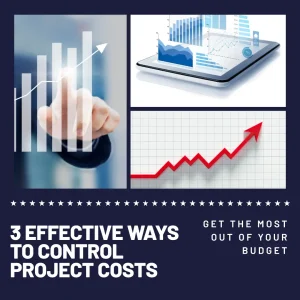I. Introduction
Hey there, project management enthusiasts! If you’ve landed on this blog post, it’s safe to assume that you’re looking to level up your project management game. And guess what? You’re in the right place! Today, we’ll dive into the fascinating world of project portfolio management (PPM) and discover its different types and levels. So, buckle up and let’s get started.
First things first, let’s talk about what project portfolio management is. PPM is a strategic approach that helps organizations manage and prioritize multiple projects to achieve their business goals. It involves balancing resources, budgets, and schedules to deliver projects successfully. With PPM, organizations can better align their projects with their strategic objectives, ultimately driving better business results. Pretty cool, right?
Now, you might be wondering why PPM is so important. In today’s fast-paced world, businesses need to stay agile and adapt to the ever-changing environment. To do that, they need to manage their projects efficiently and effectively. This is where PPM comes in handy. It helps organizations juggle multiple projects while keeping their eyes on the prize – achieving their strategic goals.
So, what’s in store for you in this article? We’ll explore the three types of PPM – top-down, bottom-up, and hybrid – and discuss their key characteristics, differences, and applications. Then, we’ll delve into the five levels of PPM, highlighting the advantages and limitations of each level. By the end of this article, you’ll have a solid understanding of PPM, allowing you to choose the right type and level for your organization. Are you ready? Let’s dive in!
II. Three Types of Project Portfolio Management
Welcome back, project management aficionados! As promised, we’ll now explore the three main types of project portfolio management. By understanding their key characteristics and differences, you’ll be better equipped to choose the right approach for your organization. So, let’s jump in!
A. Top-Down Approach
Imagine you’re standing on a mountain, looking down at the landscape below. That’s what the top-down approach to PPM feels like. It starts at the highest level of the organization, with executives and decision-makers setting the strategic direction and priorities. Projects are then aligned with these goals to ensure that resources are allocated effectively.
Key characteristics of the top-down approach include:
- Strong executive involvement: Senior management plays a significant role in shaping the project portfolio and making decisions.
- Emphasis on strategic alignment: Projects are selected and prioritized based on their alignment with the organization’s strategic goals.
The top-down approach has its benefits, such as better alignment with business objectives and more effective resource allocation. However, it can also be challenging, as it may not fully account for the realities on the ground, such as project-level issues or team constraints.
Real-life examples of organizations that use a top-down approach include large enterprises with a clear strategic direction and goals.
B. Bottom-Up Approach
Now, picture yourself at the base of that mountain, looking up. This is the bottom-up approach to PPM. In this approach, project teams and managers identify and propose projects based on their own knowledge and expertise. These projects are then evaluated and prioritized at the portfolio level, based on their alignment with the organization’s goals.
Key characteristics of the bottom-up approach include:
- Grassroots involvement: Project teams and managers play a significant role in initiating and proposing projects.
- Emphasis on project-level details: The focus is on the nitty-gritty aspects of each project, such as specific tasks, resources, and timelines.
The bottom-up approach offers advantages like improved buy-in from project teams and better insights into project-level challenges. However, it may struggle with alignment to the organization’s strategic objectives, as projects are not explicitly driven by top-level goals.
Real-life examples of organizations that use a bottom-up approach include startups and smaller companies with a more decentralized structure.
C. Hybrid Approach
Can’t decide between the top-down and bottom-up approaches? You don’t have to! The hybrid approach combines the best of both worlds, blending the strategic focus of the top-down method with the project-level insights of the bottom-up approach.
Key characteristics of the hybrid approach include:
- Balanced involvement: Both executives and project teams play a significant role in shaping the project portfolio.
- Emphasis on flexibility: The hybrid approach allows for adaptability, as organizations can shift between top-down and bottom-up approaches as needed.
The hybrid approach offers the benefits of both top-down and bottom-up methods, such as improved strategic alignment and increased buy-in from project teams. However, it may also require more effort to manage and maintain, as it requires a delicate balance between the two approaches.
Real-life examples of organizations that use a hybrid approach include mid-sized businesses or larger enterprises looking to balance strategic direction with project-level insights.
So, there you have it – the three types of project portfolio management. With this knowledge under your belt, it’s time to move on to the five levels of PPM. Ready? Let’s go!
III. Five Levels of Project Portfolio Management
Fantastic job sticking around, project management enthusiasts! Now that we’ve covered the three types of PPM, it’s time to dive deeper into the various levels of project portfolio management. Each level offers a different degree of complexity and sophistication, so understanding them will help you choose the best fit for your organization. Let’s get started!
A. Level 1: Basic PPM
Level 1 PPM is like dipping your toes in the water. It’s the simplest form of project portfolio management, perfect for organizations just starting to explore PPM. At this level, organizations typically use basic tools, such as spreadsheets, to track projects and resources.
Key characteristics of Level 1 PPM include:
- Limited visibility: Project information is often scattered across various tools, making it challenging to get a holistic view of the portfolio.
- Manual processes: Resource allocation, scheduling, and prioritization are often done manually, which can be time-consuming and error-prone.
Organizations that typically use Level 1 PPM include small businesses or companies with limited resources and a small number of projects to manage. While this level offers simplicity and ease of use, it may struggle with scalability and efficiency as the organization grows.
B. Level 2: Tactical PPM
Think of Level 2 PPM as taking the plunge and diving into the pool. At this level, organizations start using more advanced tools, such as specialized PPM software, to streamline project management processes. Tactical PPM focuses on improving efficiency and communication across projects.
Key characteristics of Level 2 PPM include:
- Better visibility: PPM tools provide a more comprehensive view of projects and resources, enabling better decision-making.
- Standardized processes: Organizations at this level begin to adopt best practices and standardized processes for project management.
Level 2 PPM is suitable for growing organizations with more complex projects that require better coordination and resource management. While it offers better visibility and efficiency, it may still lack the strategic focus needed for optimal project prioritization.
C. Level 3: Advanced PPM
Welcome to the deep end of the pool! Level 3 PPM takes things up a notch by integrating project management with strategic planning. At this level, organizations focus on aligning their project portfolios with their strategic objectives to drive better business results.
Key characteristics of Level 3 PPM include:
- Strategic alignment: Projects are selected, prioritized, and managed based on their alignment with the organization’s strategic goals.
- Enhanced decision-making: Advanced PPM tools and analytics help organizations make more informed decisions about project prioritization and resource allocation.
Organizations that typically use Level 3 PPM include mid-sized or large enterprises with multiple, complex projects and a clear strategic vision. This level offers better strategic alignment and decision-making capabilities, but it may require more time and resources to implement and maintain.
D. Level 4: Integrated PPM
At Level 4, PPM becomes a well-oiled machine. Organizations at this level have a fully integrated PPM process that connects project management with other business functions, such as finance, HR, and risk management.
Key characteristics of Level 4 PPM include:
- Cross-functional integration: PPM processes are tightly integrated with other business functions, enabling better collaboration and coordination across the organization.
- Continuous improvement: Organizations at this level are committed to refining and optimizing their PPM processes over time.
Level 4 PPM is suitable for large enterprises with complex project portfolios and a strong commitment to continuous improvement. While it offers better cross-functional integration and a more robust PPM process, it may also require significant effort and resources to implement and maintain.
E. Level 5: Strategic PPM
Finally, we’ve reached the pinnacle of PPM sophistication: Level 5. At this level, organizations have fully embraced PPM as a strategic driver, with a mature process that’s deeply ingrained in the company’s culture. Level 5 PPM enables organizations to achieve their strategic goals while continuously adapting to changing market conditions.
Key characteristics of Level 5 PPM include:
- Adaptive strategy: Organizations at this level can rapidly adjust their project portfolios in response to changing market conditions and evolving strategic goals.
- Organizational culture: PPM is deeply embedded in the company’s culture, with widespread buy-in and commitment from all levels of the organization.
Level 5 PPM is ideal for large, complex organizations with a strong strategic focus and a well-established PPM process. This level offers the highest degree of strategic alignment, adaptability, and organizational commitment. However, achieving Level 5 PPM requires a significant investment in time, resources, and organizational change.
So, there you have it – the five levels of project portfolio management. Armed with this knowledge, you’re now ready to make an informed decision about the best type and level of PPM for your organization.
IV. Choosing the Right Type and Level of PPM for Your Organization
Congratulations, project management explorers! You’ve made it through the different types and levels of PPM, and now you’re ready to make some decisions for your organization. But with so many options, how do you choose the right type and level of PPM? Don’t worry – I’ve got you covered. In this section, we’ll discuss some key factors to consider and share some tips for successful PPM implementation and adoption. Let’s dive in!
A. Factors to consider
When choosing the right type and level of PPM for your organization, it’s essential to consider the following factors:
- Organizational size: Smaller organizations may benefit from a bottom-up or hybrid approach, while larger enterprises may prefer a top-down or hybrid approach. Similarly, smaller organizations may start with Level 1 or 2 PPM, while larger ones may opt for more advanced levels.
- Industry and sector: Different industries and sectors may have unique requirements and challenges that could influence the choice of PPM type and level. For example, highly regulated industries may require a more structured, top-down approach, while fast-paced sectors might need a more adaptable, hybrid approach.
- Project complexity and scale: The complexity and scale of your projects will also impact your choice. If you’re managing simple, small-scale projects, a basic PPM level may suffice. However, if you’re juggling multiple complex projects, a more advanced PPM level may be necessary.
- Company culture and values: Finally, it’s crucial to consider your organization’s culture and values when selecting a PPM approach. If your company values collaboration and bottom-up decision-making, a bottom-up or hybrid approach may be a better fit. If strategic alignment is a top priority, a top-down or hybrid approach might be more suitable.
B. Tips for successful PPM implementation and adoption
Now that you’ve considered the factors above, here are some tips to help ensure a smooth PPM implementation and adoption process:
- Secure executive buy-in: No matter which type or level of PPM you choose, it’s essential to have support from your organization’s executives. Their commitment will be instrumental in driving successful PPM adoption and ensuring that the chosen approach aligns with the company’s strategic goals.
- Communicate the benefits: Clearly communicate the benefits of the chosen PPM approach to your team members and stakeholders. Help them understand how it will improve project management processes, streamline resource allocation, and ultimately drive better business outcomes.
- Start small and scale up: When implementing a new PPM approach, it’s often best to start small and gradually scale up as you gain experience and confidence. This will allow you to learn from any challenges and refine your PPM processes along the way.
- Provide training and support: Ensure your team members have the necessary training and support to adopt the chosen PPM approach. This may include workshops, webinars, or one-on-one coaching sessions to help them understand the new processes and tools.
- Monitor progress and adjust as needed: Finally, regularly monitor the progress of your PPM implementation and be prepared to adjust your approach as needed. Learn from your experiences and adapt your PPM processes to better suit your organization’s unique needs and goals.
And there you have it! With these factors and tips in mind, you’re now well-equipped to choose and implement the right type and level of PPM for your organization.
V. Conclusion
Congratulations on reaching the end of this article! We’ve explored the different types and levels of project portfolio management, giving you a solid understanding of the various approaches available. Remember, PPM is essential for managing multiple projects and achieving strategic objectives. By choosing the right approach for your organization and following best practices, you’ll be able to reap the benefits of an efficient and effective PPM process. So, go forth and conquer your project portfolios, project management pros!
To find out how Artificial Intelligence is changing the Project Management landscape, you have enjoy reading this article https://www.shaunstoltz.com/did-artificial-intelligence-just-change-everything-about-project-management/
Find out more about Shaun Stoltz https://www.shaunstoltz.com/about/
This post was written by an AI and reviewed/edited by a human.



